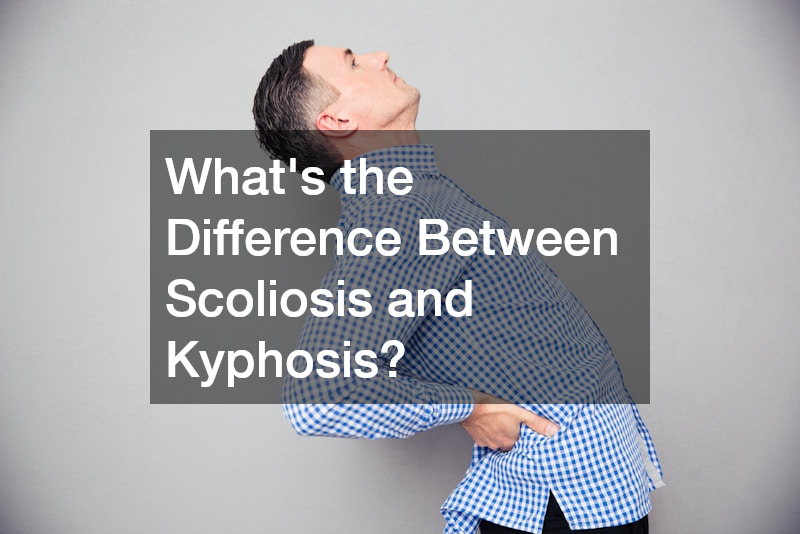

Understanding the differences between scoliosis and kyphosis is crucial for accurately diagnosing and treating these spinal conditions. While both affect the spine, they have distinct characteristics, causes, and treatment approaches. Here’s a detailed look at scoliosis vs kyphosis.
Scoliosis
Scoliosis is a condition characterized by an abnormal lateral curvature of the spine. Instead of a straight line, the spine curves to the side, forming an “S” or “C” shape.
The exact cause of scoliosis is often unknown, making it idiopathic. However, it can be linked to congenital spinal deformities, neuromuscular conditions, or degenerative spinal changes. It commonly develops during the growth spurts before puberty.
Symptoms of scoliosis vary depending on the severity of the curve. Common signs include uneven shoulders, one hip higher than the other, and a visible curve in the spine. Severe scoliosis can cause back pain and breathing difficulties due to reduced space in the chest for the lungs to expand.
Diagnosis involves a physical examination and imaging tests such as X-rays, which measure the degree of spinal curvature. The Cobb angle is used to determine the severity of the curve.
Treatment for scoliosis depends on the curve’s severity and the patient’s age. Mild cases may only require monitoring, while moderate curves might necessitate bracing to prevent further progression. Severe cases often need surgical intervention to correct the spinal alignment.
Kyphosis
Kyphosis refers to an excessive outward curvature of the spine, leading to a hunched or rounded upper back. It is also known as hyperkyphosis or hunchback.
Kyphosis can result from poor posture (postural kyphosis), structural abnormalities in the spine (Scheuermann’s kyphosis), osteoporosis, spinal infections, or congenital defects. It can affect individuals of all ages, from children to the elderly.
Symptoms of kyphosis include a visible hump on the back, back pain, stiffness, and fatigue. In severe cases, kyphosis can lead to neurological symptoms due to spinal cord compression and respiratory issues from reduced lung capacity.
Diagnosis involves a physical examination and imaging tests like X-rays or MRI scans to assess the spine’s curvature and identify underlying causes.
Treatment for kyphosis depends on the underlying cause and severity. Postural kyphosis is often managed with physical therapy to strengthen the back muscles and improve posture. Scheuermann’s kyphosis might require bracing during adolescence. Severe kyphosis due to structural abnormalities or osteoporosis may need surgical correction to stabilize the spine and relieve symptoms.
Scoliosis vs Kyphosis: Key Differences
The primary difference between scoliosis and kyphosis is the direction of the spinal curvature. Scoliosis involves a lateral (sideways) curvature, while kyphosis involves an excessive forward curvature. Additionally, scoliosis is often idiopathic, while kyphosis can result from various causes, including poor posture and spinal abnormalities.
.








